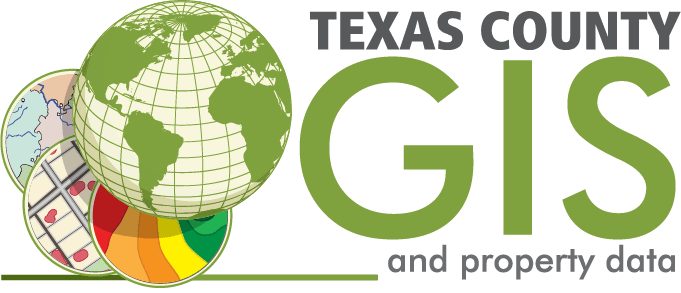What Is GIS Data?
If you’re new to GIS data, don’t know where to start, or you just don’t understand how GIS data can help you, this guide is going to be for you. GIS may appear complex, in many ways it can be, but it can also be very beneficial to your company. Once you’re done with this article, not only will you be aware of the fundamentals of GIS but also possess an expanded and accurate word bank to confidently engage in conversations about GIS and its related technologies.
What Is GIS?
Through a Geographic Information System (GIS), you can unify location-based data with attributes and other descriptive characteristics. This technology allows for the creation, management, analysis, and mapping of all types of spatial information which creates powerful insights into where things are located along with what they’re like in that area. By leveraging GIS, you can comprehend relationships and patterns, as well as their geographical context. This resource is integral for science and practically every industry! The advantages of using this tool are vast: improved communication between users, amplified efficiency in tasks completed, plus better management decisions that have emerged from efficient analysis.
Location details in the GIS industry are commonly termed “spatial data.” These could come as an address, a set of coordinates showing latitude and longitude, or complex three-dimensional shapes. Rather than delve into semantics or get bogged down with technical terms, it’s likely you are here to learn what most people mean when they say “GIS” and its worthiness for your organization.
How Is GIS Data Used?
Countless numbers of companies across the globe, from virtually every industry, are harnessing the power of Geographical Information Systems (GIS). By using GIS to create maps that communicate and analyze data efficiently, businesses have been able to share information easily and solve complex problems. This revolutionary technology is transforming how we do business on a global scale!
GIS can do a lot, but it is essentially used to create maps from data. What’s more – the maps that are created will show you spatial relationships between different elements in your data set, allowing for comprehensive and insightful analysis of your information.
This type of technology can help you with;
- Monitoring changes
- Forecasting
- Identifying problems, issues, concerns
- Event management and responses
- Understanding trends
- Setting priorities
People can easily identify patterns when they are displayed in a visual way, like a graph, table, chart, or map. A lot of time and effort can be saved. Things that might take an hour or two to find in a spreadsheet can be found faster if a map, table, or chart is used instead.
By utilizing map and interactive displays, the sky’s the limit for uncovering useful insights in your data. This could include plotting markers or color coding locations based on the values each would possess; thus enhancing your exploration capabilities. Creating heat maps showing areas of greater or lesser value are another option you have.
With so many options at hand, there is an inexhaustible supply of potential discoveries just waiting to be tapped into.
- Maps: Maps are an efficient way to store, view and share data layers and analytics with virtually anyone in the world. GIS maps can be easily embedded into applications for added convenience, allowing users access from any device at any location.
- Analysis: Spatial analysis can help you understand the potential and suitability of a geographic area, forecast outcomes, interpret data in new ways, and much more – offering valuable insight to inform your decisions.
- Data: Geographical Information Systems (GIS) harnesses several types of data layers by connecting them to a geographic component. This combination of information from imagery, features, and basemaps with spreadsheets and tables creates the powerful GIS data tool.
- Apps: GIS Apps are designed to simplify the task of getting work done and make geo-spatial data more accessible for all. These apps can be used anywhere – from cell phones, to tablets, web browsers and desktops! Regardless of where you access them, these applications provide an incredibly focused user experience so that everyone can take advantage of their benefits.
Who Uses GIS?
Here at BIS, we use GIS data to work with government agencies. Governments are not the only one that can benefit from GIS, there’s a wide range of sectors where this technology is building strong, efficient, data driven relationships.
- Education
- Electric Gas and Utilities
- Government
- Healthcare
- Insurance
- Manufacturing
- Marketing
- Oil and Gas
- Public and Private Sector Corporations
- Public Safety
- Real Estate
- Retail
- Telecommunications
- Transportation
- Water
How Much Does GIS Costs?
Yes, GIS is an investment, it’s going to cost you money. However, there are both free and paid GIS options you can choose from. It all depends on your unique scenario and what you’re trying to accomplish.
If you want to get an estimate, give us a call or fill out our contact form, we can then give you an estimate based on your unique situation. It would be tough to give an estimate on GIS data costs without knowing the specifics of what you need and what you’re trying to accomplish.
Final Thoughts
While we did have an opportunity to discuss GIS data in this article, there’s still a lot more you can learn about GIS. Here at TCGD, we have many articles that cover GIS data in-depth, so be sure to check those out.
If you have questions about GIS, want to learn more, need a quote, or need anything else, we’re always here to help. Be sure to reach out and our team will be with you right away.
